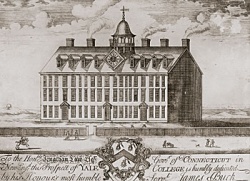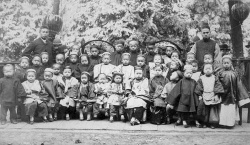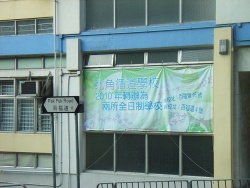From The Peopling of New York City
Contents |
The First
Yung Wing (1828-1912) was one of the most famous Chinese that lived in the nineteenth century in America. He was born near Macao where he followed Christian missionaries and attended one of their schools in Hong Kong, later coming to America in 1847. He was the first Chinese man to attend and graduate from an American college, entering Yale College in 1850. He received a Bachelor’s degree four years later and became a naturalized American citizen. He was involved in many business transactions after graduating, performing many missions for the Chinese government abroad. But the task he is known mostly for is serving as codirector of the Chinese Educational Mission for 1872-1881, which brought many men to America for a Western education. But after 1881, the Chinese government no longer favored Yung Wing and they closed down the educational mission. In 1898 he attempted to receive assistance from the American minister but had his citizenship cancelled by the American secretary of state, John Sherman. He was unable to return to America, but in 1902 he managed to enter and passed away in Connecticut. [1]
Religious Schooling
When the Chinese were first present in New York City, their religious views were very unique compared to most other ethnic groups during the time period. Their views were looked upon strangely and negatively since they worshipped many idols compared to other religions with one God. But the Chinese, to avoid conflicts, were schooled religiously with the teaching of Christianity and its “truths.” Their “willingness” to be influenced by Christianity and the scriptures was shown by the Chinese Mission School at Five Points House of Industry, which was established 1871. The teachers for this school were mainly from the Fourth Avenue Presbyterian Church as was the supervisors. But the school was primarily under the care of Mr. A. H. Kembell and Miss Goodrich, where over 150 young Chinese men where educated in this school. [2]
Contemporary Times
In recent years, the Chinese population has increased substantially and is one of the major ethnic groups in New York City. From a 1970 census on the Chinese American educational profile that looked at people of ages twenty-five and older, there were 68.1 percent of Chinese Americans that graduated from high school. But the median for the years of schooling completed showed that it was only 12.4 years, where more than a quarter of the Chinese adults reached the education level of seventh grade. But these results showed that more than a quarter of the adults graduated from college.
In contemporary times, the Chinese are stereotyped by their outstanding academic records and their amazing abilities in mathematics and sciences, but many are unaware that there is a great tendency for recent immigrants to be unable to speak English. Not only are they unable to speak English but also they are poorly educated and often work in low-paid serves, such as laundries, restaurants, and sweatshops. Although the immigrants, also known as FOBs (fresh-off-the-boat), are poorly educated, conversely the Chinese born in America are highly educated and tend to be college educated. The ABCs (American-born Chinese) often have middle-class occupations and make a decent living. [3]
Today, due to their recent trend in education, Chinese immigrant families stress on education for their children. They often send them evening schools, or Saturdays school to learn a different language, an instrument or just to get better at math and science. It is said that students who do well in school bring honor to family while those who fail bring shame to the family.
References
- ↑ Daniels, Roger. Coming to America. A history of Immigration and Ethnicity in American Life. Harper Perennial, 1990. (page 247-248)
- ↑ The New York Times, Feb 16, 1874, “The Chinese New Year. Idolatry In Baxter Street – Feasting and Smoking Opium,”
- ↑ Daniels, Roger. Coming to America. A history of Immigration and Ethnicity in American Life. Harper Perennial, 1990. (page 345-355)


